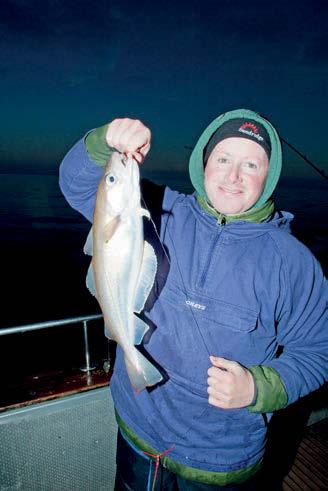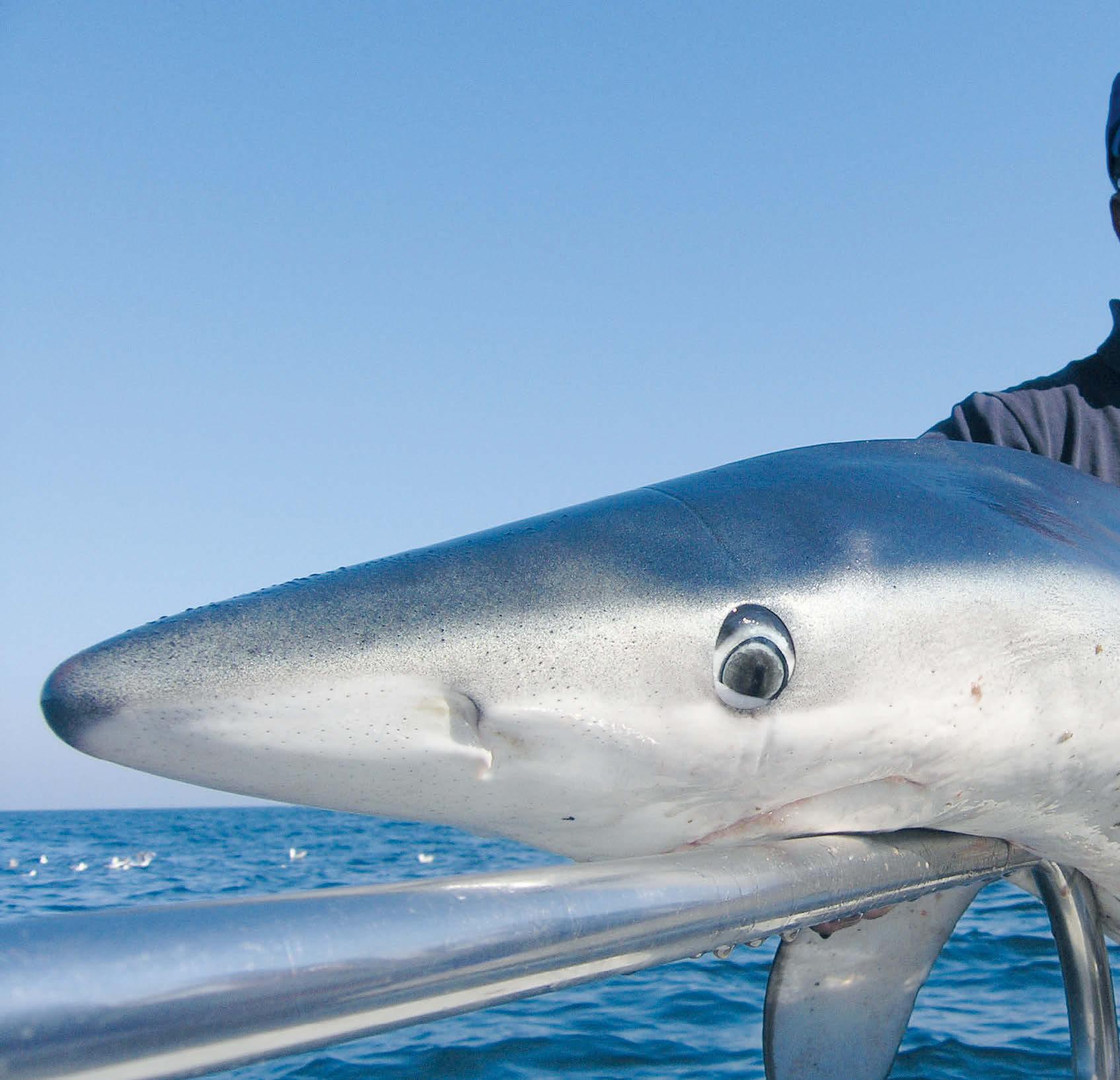
8 minute read
Winter cod
from Sea Angler Guides #5
by KELSEY Media

Although not so commonplace these days, it is still possible to target big winter cod around the UK
Catching winter cod is all about using big, smelly, baits and waiting for the cod to home in on the scent trail. It really is a waiting game, and there’s no real pattern to when these cod turn up and feed. In days gone by it was possible to actively target a 30lb plus cod along the south coast, but these fi sh have long since gone. However, there are still a few areas of the country that can produce big fi sh, such as the Bristol Channel and northern Scottish waters.


RIGS & BAITS

Traditionally, Pennell rigs tied using a couple of size 10/0 O’Shaughnessy hooks to at least 100lb mono were used along the South Coast. ese can be used on a single trace, but the top tactic has been a 4ft-long fl owing trace that resembles something like a wishbone rig, except one snood is shorter than the other. is eff ectively gives you two hooks about 8 inches apart.
On the end of each snood, tied using 80lb mono, is a single size 8/0 or 9/0 wide-gape hook. e secret to this rig’s success is the fact that it only uses single hooks, but you have two baits presented in the water – which doubles the scent trail. e baits are far more streamlined too, with the ‘point’ hook having half a medium cuttlefi sh and whole squid whipped together with bait elastic, while the hook above is baited with either a squid and worm wrap, or another half cuttle and squid cocktail.
RODS & REELS
Downtide fi shing for big cod requires some fairly sturdy tackle. Not only will you have the chance of a 20lb plus cod in a strong tide, but you will more than likely encounter conger eels to over 50lb in the process in some areas, especially the South Coast and Bristol Channel.
Because you will have to contend with the tide for at least some part of the day, and the fact that you will be using big baits, rods need to be able to handle whatever weight is needed to keep your bait on the bottom. In some cases this may mean weights of up to 2lb, depending on where you are fi shing.
A good 20lb class rod will be required, and, generally speaking, a multiplier is the best selection for this style of fi shing. It’s a matter of power and torque, where the combined pressure from the tide and a large fi sh can render a fi xed spool reel all but useless. Lever drag reels are excellent for downtiding as more drag can be set as required during the fi ght without too much messing about.


They are few and far between, but huge English Channel cod can still be caught








Big baits often means big fi sh
Keep the pressure on and don’t give the fi sh an inch, if you can




It’s a good idea when fishing a two-hook trace with big baits to try and lower it down slower than you normally would. Just use your thumb on the spool to slow the descent. Doing this will help prevent tangles, but it will also allow the tide to carry the baited rig a bit further away from the boat.
It has long been proven that when fishing the English Channel, getting your cod bait as far away from the boat as possible often pays dividends. You may have read about anglers ‘ballooning’ their baits back some 100 yards, and this is exactly the reason why they do it.
Once your rig and lead are on the seabed, lift the rod and let your lead hit the bottom once more, then slacken off the drag so a big cod can take line if it needs too. Put your rod in a rod holder and wait. At the first sign of a bite, it’s a good idea to pull a couple of feet of line from your reel in order to ‘feed’ the cod. You don’t have to do this, but very often it results in a better hook up and a more positive take.
When the tide is running hard it is worth checking that your lead and rig are still holding fast on the seabed every now and then by lifting the rod tip and lowering it back down, feeling for the ‘thud’ as the lead hits bottom. If your lead isn’t holding, then simply let off a little more line until it does. If you’re still having problems, then you may need to add more lead.
TAKE YOUR TIME
When you get hooked up to a big cod or conger it’s often the case that you find yourself in a deadlock battle at some point. e fight may begin easily, but if a big cod decided to open its mouth midwater, you may reach the situation where you can’t gain any more line for a while. e trick is not to panic. Keep the pressure on the fish and just hold it there, trying not to give any more line if possible. What tends to happen in this situation is that the tide actually helps lift the fish up in the water, and quite often you will see the cod or eel break the surface way behind the boat.
If the fight progresses normally, without the cod opening its mouth, then you can usually tell it’s a big one because it will swim towards the boat and your line will be going straight down. In this situation you have to be on the ball and be prepared for a sudden lunge as the cod opens its mouth and the tide grabs hold. You must make sure your drag is set to perfection, in order to prevent your line from going pop, or even pulling the hooks out.
Just take your time and stay in control – don’t give that fish any slack if you can help it. It might take you 20 minutes to get the fish in the net, but it will be worth it. n










HOW TO PRESENT A WHOLE CUTTLEFISH
Without doubt, a whole cuttlefish is one of the most consistent big cod catchers along the south coast. It’s a messy bait to prepare, but the cod-catching qualities make it worthwhile. is is one of those ‘sit and wait’ baits, and more often than not it’s a big fish that will take it. I quite often fish a whole cuttle on one rod while experimenting with other baits on another when I’m fishing down south, but it is a waiting game. You’ll have whiting, dogfish and the like trying to nip bits off the cuttle, but generally speaking it will stay out there for a few hours before you need to wind in a re-bait.










